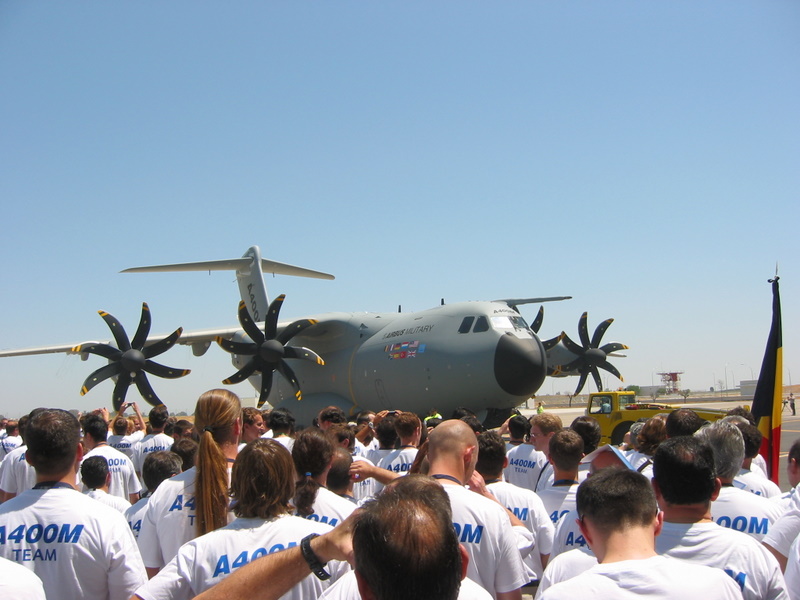Scimitar propeller on:
[Wikipedia]
[Google]
[Amazon]
 A scimitar propeller is a type of
A scimitar propeller is a type of
propeller
A propeller (often called a screw if on a ship or an airscrew if on an aircraft) is a device with a rotating hub and radiating blades that are set at a pitch to form a helical spiral which, when rotated, exerts linear thrust upon a working flu ...
that has curved blades with increasing sweep along the leading edge. Their name is derived from their visual similarity to the curved blades of scimitars. In the early 1900s, as established by the French aeronautical inventor Lucien Chauvière and his commercial success with his scimitar-shaped ''Integrale'' propeller design, they were made of laminated wood. The combination of light weight and efficient aerodynamics results in more power and reduced noise.
All propellers lose efficiency at high rotational speeds due to an effect known as wave drag
In aeronautics, wave drag is a component of the aerodynamic drag
In fluid dynamics, drag, sometimes referred to as fluid resistance, is a force acting opposite to the direction of motion of any object moving with respect to a surrounding flu ...
, which occurs as an airfoil
An airfoil (American English) or aerofoil (British English) is a streamlined body that is capable of generating significantly more Lift (force), lift than Drag (physics), drag. Wings, sails and propeller blades are examples of airfoils. Foil (fl ...
approaches supersonic
Supersonic speed is the speed of an object that exceeds the speed of sound (Mach 1). For objects traveling in dry air of a temperature of 20 °C (68 °F) at sea level, this speed is approximately . Speeds greater than five times ...
speeds. This powerful form of drag reduces propeller efficiency at high rotational speed which, in turn, reduces power transmission from the aircraft's engine. In the case of a propeller, this effect can happen when the propeller turns fast enough that the tips of the blades approach the speed of sound, even if the plane itself is not moving forward. Wave drag also occurs at high linear aircraft speeds. According to the same principles that govern swept wing
A swept wing is a wing angled either backward or occasionally forward from its root rather than perpendicular to the fuselage.
Swept wings have been flown since the pioneer days of aviation. Wing sweep at high speeds was first investigated in Ge ...
s in high-speed aircraft, propeller blades can be swept back in order to mitigate wave drag, thus allowing them to remain efficient at higher rotational speeds. Since the inboard part of a propeller has a slower rotational velocity relative to the tip, the blade becomes progressively more swept from the propeller hub to the tip, giving rise to its characteristic shape.
In the 1940s, NACA
The National Advisory Committee for Aeronautics (NACA) was a United States federal agency that was founded on March 3, 1915, to undertake, promote, and institutionalize aeronautical research. On October 1, 1958, the agency was dissolved and its ...
started researching swept propellers for use in high-speed propeller-driven aircraft. Modern usage of scimitar propellers centers around turboprop
A turboprop is a Gas turbine, gas turbine engine that drives an aircraft Propeller (aeronautics), propeller.
A turboprop consists of an intake, reduction drive, reduction gearbox, gas compressor, compressor, combustor, turbine, and a propellin ...
and propfan
A propfan, also called an open rotor engine, open fan engine is an aircraft engine combining features of turbofans and turboprops. It uses advanced, curved propeller blades without a ducted fan, duct. Propfans aim to combine the speed capabili ...
engines. Since these forms of propulsion are capable of driving a propeller at transsonic or supersonic rotational speeds, as well as propelling aircraft to similarly high speeds, mitigation of wave drag is an important consideration in achieving high aerodynamic efficiency. Like modern straight-bladed propellers, scimitar propellers often make use of lightweight materials to further increase efficiency.
Propfan engines were intended to deliver significant improvements in fuel economy compared to contemporary turbofan engines, and in this they succeeded. In static and air tests on a modified DC-9, propfans reached a 30% improvement. This efficiency comes at a price, as one of the major problems with the propfan is noise
Noise is sound, chiefly unwanted, unintentional, or harmful sound considered unpleasant, loud, or disruptive to mental or hearing faculties. From a physics standpoint, there is no distinction between noise and desired sound, as both are vibrat ...
, particularly in an era where aircraft are required to comply with increasingly strict EASA and FAA noise requirements for certification. Propfans often feature scimitar blades as they typically operate at high rotational speeds.
References